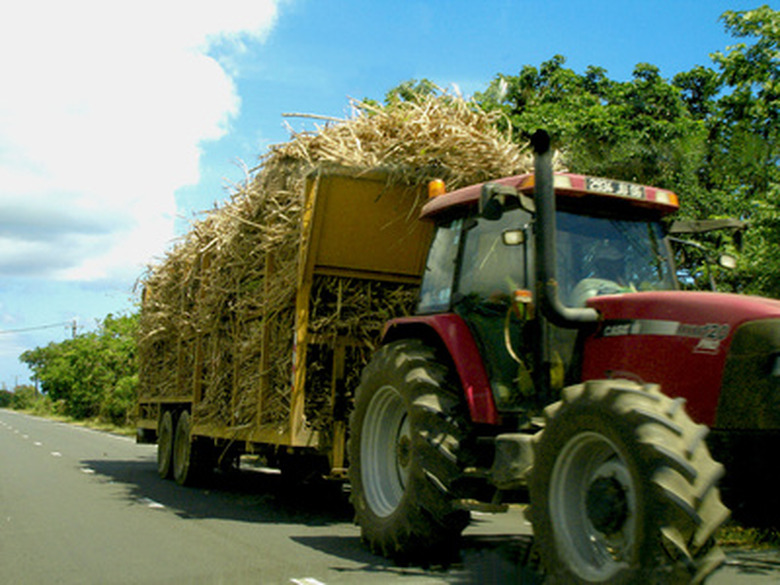How Fast Do Golden Canes Grow?
When you plan a home garden, it helps to have information about the growth rate of the plants you're considering. Slow-growing plants such as the golden cane palm (Dypsis lutescens) take years to reach their mature size, a quality that can be a bonus when you have smaller spaces to fill. The palm's slow growth rate also makes it a good choice for container growing. Golden cane palm grows year-round in U.S. Department of Agriculture plant hardiness zones 10 and 11, and makes a good houseplant in all parts of the U.S.
Growth
Step 1
The golden cane palm is also called the areca or bamboo palm. Each plant develops many sturdy stems, or canes, of bright yellow or yellowish-green with prominent nodes; the canes resemble bamboo stalks. Golden cane can reach a height of 12 to 20 feet when planted outdoors, but stays considerably smaller when container-grown. Its bright green fronds arise in rosettes from each cane and have 2-foot-long leaflets that form V shapes on each frond. The plant grows slowly, adding only about 1 foot or less to its height each year, and keeps a mostly upright shape supported by the cluster of straight canes at the base.
- When you plan a home garden, it helps to have information about the growth rate of the plants you're considering.
- Golden cane can reach a height of 12 to 20 feet when planted outdoors, but stays considerably smaller when container-grown.
Sites
Step 1
Golden cane palm grows well in any type of outdoor light, but does best in a spot that gets partial shade during most of the day. It can grow in full sun, especially in areas with cool, humid summers, but might scorch in regions with strong summer sun. Outdoors, the plant is effective as a privacy screen when planted in a group, but also makes an attractive specimen plant. Indoors, a container-grown plant prefers a spot that gets bright, indirect light, such as a foot or two away from a south- or west-facing window. You can move a potted golden cane palm outdoors during the warm months, but expose it to bright outdoor light gradually, adding an hour of two of exposure each day.
Water and Soil
Step 1
The golden cane palm grows best in organically rich soil that's well-drained, and does poorly in soil that tends to stay soggy for long periods. Adding some compost to the planting site helps increase the soil's organic content and fertility, while mixing sand into your soil improves its drainage if the dirt contains clay and drains slowly. For a potted plant, use any commercial potting soil or make your own mix from 1 part loam, 1 part compost and 2 parts sand. Be sure the pot has sufficient drainage holes. The plant prefers even, constant moisture, especially if grown in dry indoor air, and should be watered whenever the top inch of soil feels dry to the touch.
- Golden cane palm grows well in any type of outdoor light, but does best in a spot that gets partial shade during most of the day.
Other Care
Step 1
You don't have to fertilize the golden cane palm, but you can help it grow to best advantage by feeding it two or three times each season with a balanced 10-10-10 formula diluted at a rate of 1/4 teaspoon per gallon. Withhold fertilizer in winter, when the plant slows its growth. This plant develops a naturally attractive shape and requires no pruning, but you can remove damaged fronds or canes any time. It's generally a pest- and disease-free plant, but watch for browning of fronds on an indoor-grown plant. This can indicate the presence of spider mites. These are best controlled by spraying with insecticidal soap diluted at a rate of 5 tablespoons per gallon.
